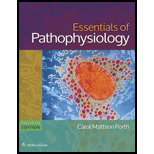
A.
To determine: The part of the eye involved in conjunctivitis.
Introduction: The human eye consists o three layers of outer middle and inner. The outer layer of an eyeball consists of cornea and opaque sclera, the middle portion consists of the uvea (includes choroid, ciliary body, and iris), and the inner layer is the neural layer which has pigment epithelium and retina.
A.
Explanation of Solution
The conjunctiva is responsible for lining the anterior surface of eyelids and covers the white portion of the eye known as the sclera. There are three parts of the conjunctiva: palpebral conjunctiva, Bulbar conjunctiva, and fornix conjunctiva. Conjunctivitis is the inflammation of the conjunctiva, which may be caused by a viral and bacterial infection. The blood vessels present in the conjunctiva becomes inflamed
B.
To determine: The type of conjunctivitis.
Introduction: Depending on the cause of conjunctivitis, there are three types of the conjunctiva: viral conjunctivitis, bacterial conjunctivitis, and allergic conjunctivitis. If the condition is mild, severe hyperemia may appear with purulent drainage.
B.
Explanation of Solution
Bacterial conjunctivitis may be caused by infection of streptococci, staphylococci, Haemophilus, and pseudomonas species. The bacterial conjunctivitis is represented by drainage of yellow and green fluid, and the eyelids are sticky. The viral conjunctiva is caused by adenoviruses and leads to hyperemia, copious tearing, and minimal exudate accompanied by fever malaise and more. The child has allergic conjunctivitis, which is characterized by itching and redness in the eyes.
C.
To determine The reason that pediatrician did not order an antimicrobial drug.
Introduction: The most common cause of conjunctivitis is bacterial and viral infections. Although there may be other causes as well, such as allergens, chemical agents, and any physical irritants, the transmission may be through direct contact by fingers, towels, contaminated eye drops, and many more.
C.
Explanation of Solution
The antimicrobial drugs do not have any effect on allergic conjunctivitis; instead of this patient may be suggested to avoid allergen and use eyes washes with tear substitute along with cold compresses. The drugs, such as topical mast cell stabilizers, histamine type I receptor antagonists, and topical non-steroidal anti-inflammatory drugs provide relief.
D.
To determine: If the condition is contagious and measures to prevent its spread.
Introduction: The rhinoconjunctivitis is the most common type of allergic conjunctivitis, which is a seasonal allergy caused by immunoglobin-mediated hypersensitivity. It is caused by airborne allergens. Symptoms of this type of conjunctivitis include eyewashes with tearing, itching, and redness of eyes.
D.
Explanation of Solution
Allergic conjunctivitis is not contagious, which means that it does not spread from person to person. The reason is that the allergic conjunctivitis is caused by the body’s reaction to an allergen and not microbes. The measures that can be adopted to prevent allergic conjunctivitis are:
- If a person has any type of allergy to an allergen, it should be avoided.
- Hands should be washed frequently.
- Toughing eyes with hands should be avoided.
- A person with conjunctivitis should use glasses while outside
- The towels, pillowcases, and bedsheets should be washed after a day and so.
Want to see more full solutions like this?
Chapter 38 Solutions
Essentials of Pathophysiology: Concepts of Altered States
- What is the opening indicated by the pointer? (leaf x.s.) stomate guard cell lenticel intercellular space none of thesearrow_forwardIdentify the indicated tissue? (stem x.s.) parenchyma collenchyma sclerenchyma ○ xylem ○ phloem none of thesearrow_forwardWhere did this structure originate from? (Salix branch root) epidermis cortex endodermis pericycle vascular cylinderarrow_forward
- Identify the indicated tissue. (Tilia stem x.s.) parenchyma collenchyma sclerenchyma xylem phloem none of thesearrow_forwardIdentify the indicated structure. (Cucurbita stem l.s.) pit lenticel stomate tendril none of thesearrow_forwardIdentify the specific cell? (Zebrina leaf peel) vessel element sieve element companion cell tracheid guard cell subsidiary cell none of thesearrow_forward
- What type of cells flank the opening on either side? (leaf x.s.) vessel elements sieve elements companion cells tracheids guard cells none of thesearrow_forwardWhat specific cell is indicated. (Cucurbita stem I.s.) vessel element sieve element O companion cell tracheid guard cell none of thesearrow_forwardWhat specific cell is indicated? (Aristolochia stem x.s.) vessel element sieve element ○ companion cell O O O O O tracheid O guard cell none of thesearrow_forward
- Identify the tissue. parenchyma collenchyma sclerenchyma ○ xylem O phloem O none of thesearrow_forwardPlease answer q3arrow_forwardRespond to the following in a minimum of 175 words: How might CRISPR-Cas 9 be used in research or, eventually, therapeutically in patients? What are some potential ethical issues associated with using this technology? Do the advantages of using this technology outweigh the disadvantages (or vice versa)? Explain your position.arrow_forward
 Human Anatomy & Physiology (11th Edition)BiologyISBN:9780134580999Author:Elaine N. Marieb, Katja N. HoehnPublisher:PEARSON
Human Anatomy & Physiology (11th Edition)BiologyISBN:9780134580999Author:Elaine N. Marieb, Katja N. HoehnPublisher:PEARSON Biology 2eBiologyISBN:9781947172517Author:Matthew Douglas, Jung Choi, Mary Ann ClarkPublisher:OpenStax
Biology 2eBiologyISBN:9781947172517Author:Matthew Douglas, Jung Choi, Mary Ann ClarkPublisher:OpenStax Anatomy & PhysiologyBiologyISBN:9781259398629Author:McKinley, Michael P., O'loughlin, Valerie Dean, Bidle, Theresa StouterPublisher:Mcgraw Hill Education,
Anatomy & PhysiologyBiologyISBN:9781259398629Author:McKinley, Michael P., O'loughlin, Valerie Dean, Bidle, Theresa StouterPublisher:Mcgraw Hill Education, Molecular Biology of the Cell (Sixth Edition)BiologyISBN:9780815344322Author:Bruce Alberts, Alexander D. Johnson, Julian Lewis, David Morgan, Martin Raff, Keith Roberts, Peter WalterPublisher:W. W. Norton & Company
Molecular Biology of the Cell (Sixth Edition)BiologyISBN:9780815344322Author:Bruce Alberts, Alexander D. Johnson, Julian Lewis, David Morgan, Martin Raff, Keith Roberts, Peter WalterPublisher:W. W. Norton & Company Laboratory Manual For Human Anatomy & PhysiologyBiologyISBN:9781260159363Author:Martin, Terry R., Prentice-craver, CynthiaPublisher:McGraw-Hill Publishing Co.
Laboratory Manual For Human Anatomy & PhysiologyBiologyISBN:9781260159363Author:Martin, Terry R., Prentice-craver, CynthiaPublisher:McGraw-Hill Publishing Co. Inquiry Into Life (16th Edition)BiologyISBN:9781260231700Author:Sylvia S. Mader, Michael WindelspechtPublisher:McGraw Hill Education
Inquiry Into Life (16th Edition)BiologyISBN:9781260231700Author:Sylvia S. Mader, Michael WindelspechtPublisher:McGraw Hill Education





